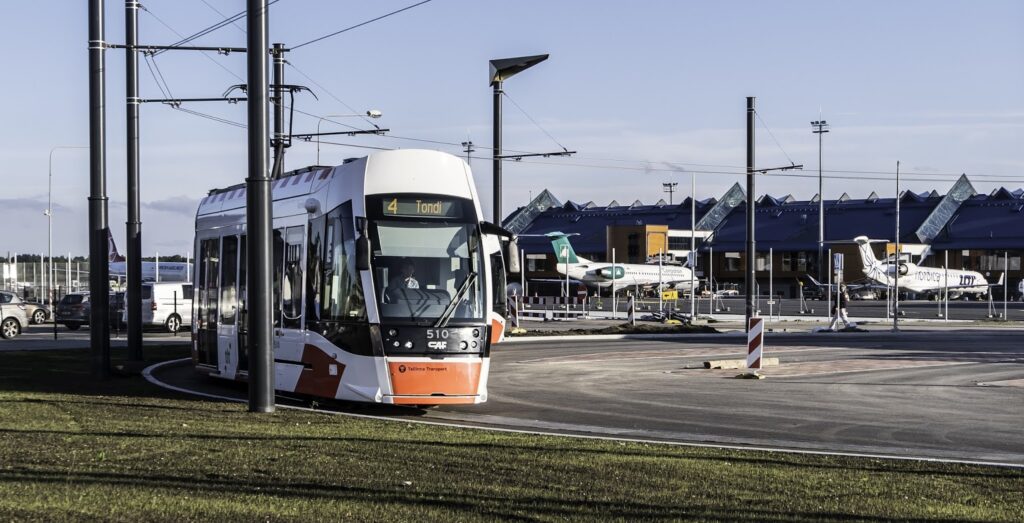The hopeful future of the tram

The tram is the most environmentally friendly, convenient, and least congested public transport that can transport large numbers of people during rush hours. In terms of passenger safety, there is no equal to trams in public transport. This has been realized all over the world, and many large and medium-sized cities have begun preparations or have already begun work on expanding tram infrastructure. Tallinn and the neighboring municipalities of the capital are no exception.
Greater Tallinn tram.
For decades, Tallinn tram lines have followed the historical logistics that developed in the early years and in the middle of the last century. The idea of building new tram lines was in the air (for example, the Lasnamäe high-speed tram), but it did not go beyond the sketches and discussions. The expansion of the tram network was revisited more seriously a decade ago when growing suburbanization and commuting forced city planners to figure out ways to find a panacea for people to move from private cars to public transport. The extension of the track to the airport became a breakthrough in the tramming of the capital. This bold solution, where the tram was taken through a tunnel for the first time in Tallinn, broke the stagnant thought patterns and encouraged further progress in the development of the tram industry. Since the opening of the airport route, the expansion of the tram network no longer seems a utopia. The next innovation is already on the desktop – the extension of the tramway to the passenger port. The future view of the tram reaching the suburbs of the capital, which would significantly reduce the problem of car ownership due to commuting, is also taking clearer shape. The streets of Tallinn will inevitably become too tight for cars, and if we do not want to endure the crippling congestion of all city life in the future, the only way is to create the most user-friendly, yet fast and congestion-free public transport. The best way to do this is to invest in tram traffic. Considering that within the city, the relocation of people involved in work and study covers about 50% of the population, and as public transport becomes faster and more convenient, at least a quarter of current car users agree to give up driving, when alternative options open, we will have about 60-70 thousand cars disappearing from the street. If we add a quarter of the 60-80 thousand cars from the neighboring municipalities that reach the streets of Tallinn every day, another 20-30 thousand machines will disappear from traffic. Removing such a large number of cars from urban traffic is a serious argument in favor of developing a tram network. It is the creation of a clean and stress-free environment that is the reason why local governments take the development of the tram network seriously. At the end of last year, an analysis of the feasibility and cost-effectiveness of light rail transport in Tallinn and Harju County was presented, which could become a basic document in the preparation and implementation of the next stages of the development of the tram network in Tallinn and neighboring municipalities. Both the lines within the city and the connection with the neighboring municipalities were analyzed. It was found that connections in the city center should be improved and logistically diversified, considering the introduction of shuttle trams here, and it would be in the interests of the city as a whole if the tram also reached Mustamäe, Õismäe, and Lasnamäe. It was pointed out that the largest volumes of movements take place between Tallinn and Viimsi, Rae, Harku, and Maardu, where the construction of tram lines would be fully justified. An important uncovered direction is Viimsi – Lasnamäe – Rae. The analysis proved once again that when considering the justification for building tramways, it is not expedient to focus only on total costs but to approach tram efficiency as a socio-economic measure of population satisfaction, nature conservation, a more stress-free urban environment, and healthier and happier life. Yes, building a tramway is expensive, amounting to two million euros per kilometer, in addition to the cost of providing substations, stops, and access to them, but it is becoming increasingly clear that there is no alternative to developing a tram network. The analysis took into account a 30-year feasibility period, which is also the basis for estimates of project costs. It is estimated that EUR 1 billion should be invested in tram infrastructure by 2050. This is, of course, the case if all the tracks surveyed are indeed ready by then. For example, a 10.5 km long tram line from Kadriorg to Viimsi would cost about 60 million euros, plus the reconstruction of the 2 million Pirita Bridge. Initially, the line would cover the need for 10 trams, at an average cost of € 2.5 million, which would add € 25 million to the cost of the line. The driving time from Viimsi to Kadriorg would be about 20 minutes. The long-term effect of resolving mobility in the direction of Viimsi and the contribution to environmental protection would justify the costs.
The ice has begun to move
The fact that this expansion of the tram network is not just empty words is confirmed by the regional mobility memorandum signed by the Ministry of Economic Affairs and Communications and the Tallinn City Government, according to which the Tallinn Region Mobility Council was formed, with the task of reaching agreements on action plans and investment needs for the period 2021-2035. In addition, an analysis of the integrated management, financing, and planning model of mobility in the Tallinn region will be prepared, which would describe different scenarios for the launch of a cross-border public transport network and the creation of a unified ticketing system. The feasibility and cost-benefit analysis of light rail transport is a good basis for the Council to make decisions on tram development and investment. People interested in the successful development of Tallinn have reason to rejoice because the capital and its surrounding areas covered by an efficient tram network add attractiveness to the urban environment and create a completely new quality of space. Tallinna Linnatranspordi Aktsiaselts fully supports favorable developments in the tram industry. We are not afraid of new challenges, because we have enough experience to operate a tram network that is many times larger than the current infrastructure. We are on the right track when investing in trams, as our neighbors in Helsinki, Riga, and Stockholm are doing the same. The development of the tram network is also on the agenda in, for example, the British megacities, many European centers, as well as Sydney and Melbourne. It is safe to say that Tallinn’s public transport is developing in the same direction as the rest of the world.

